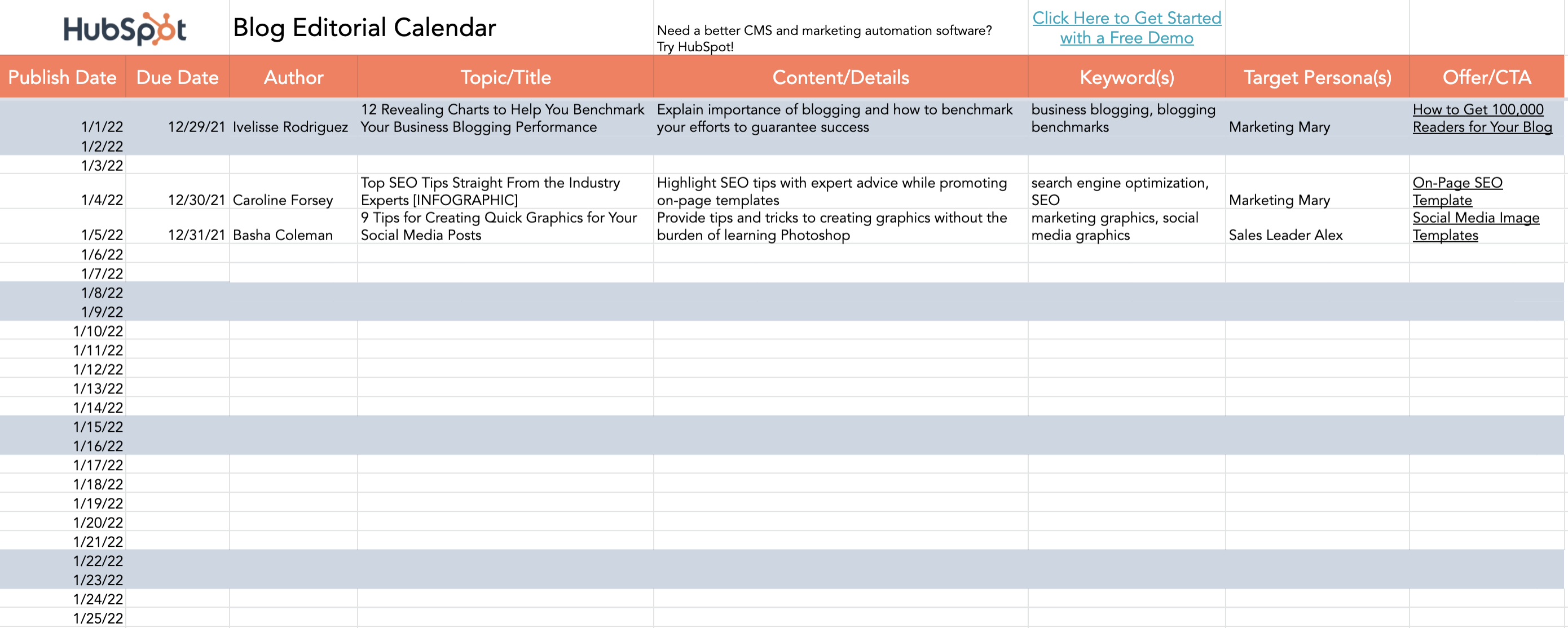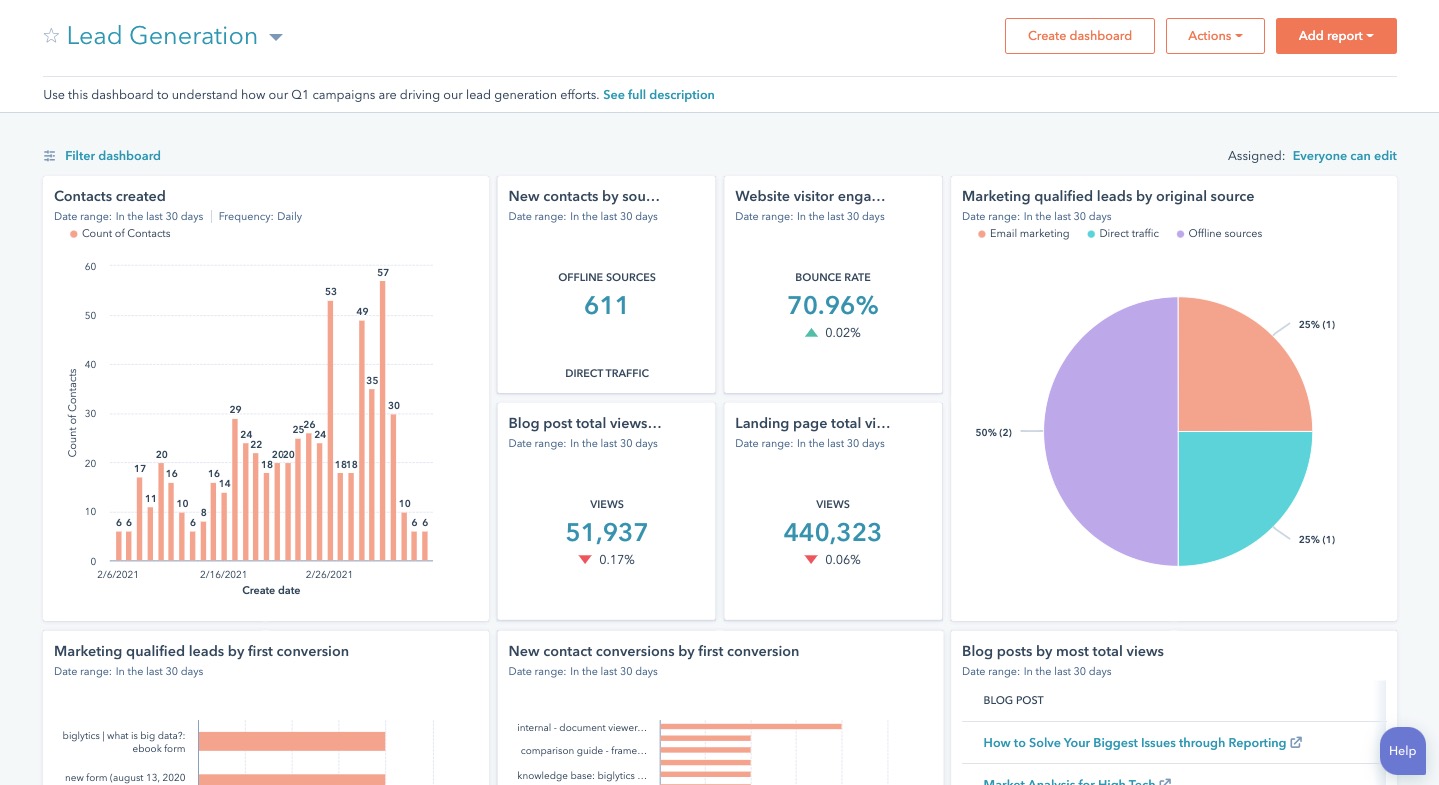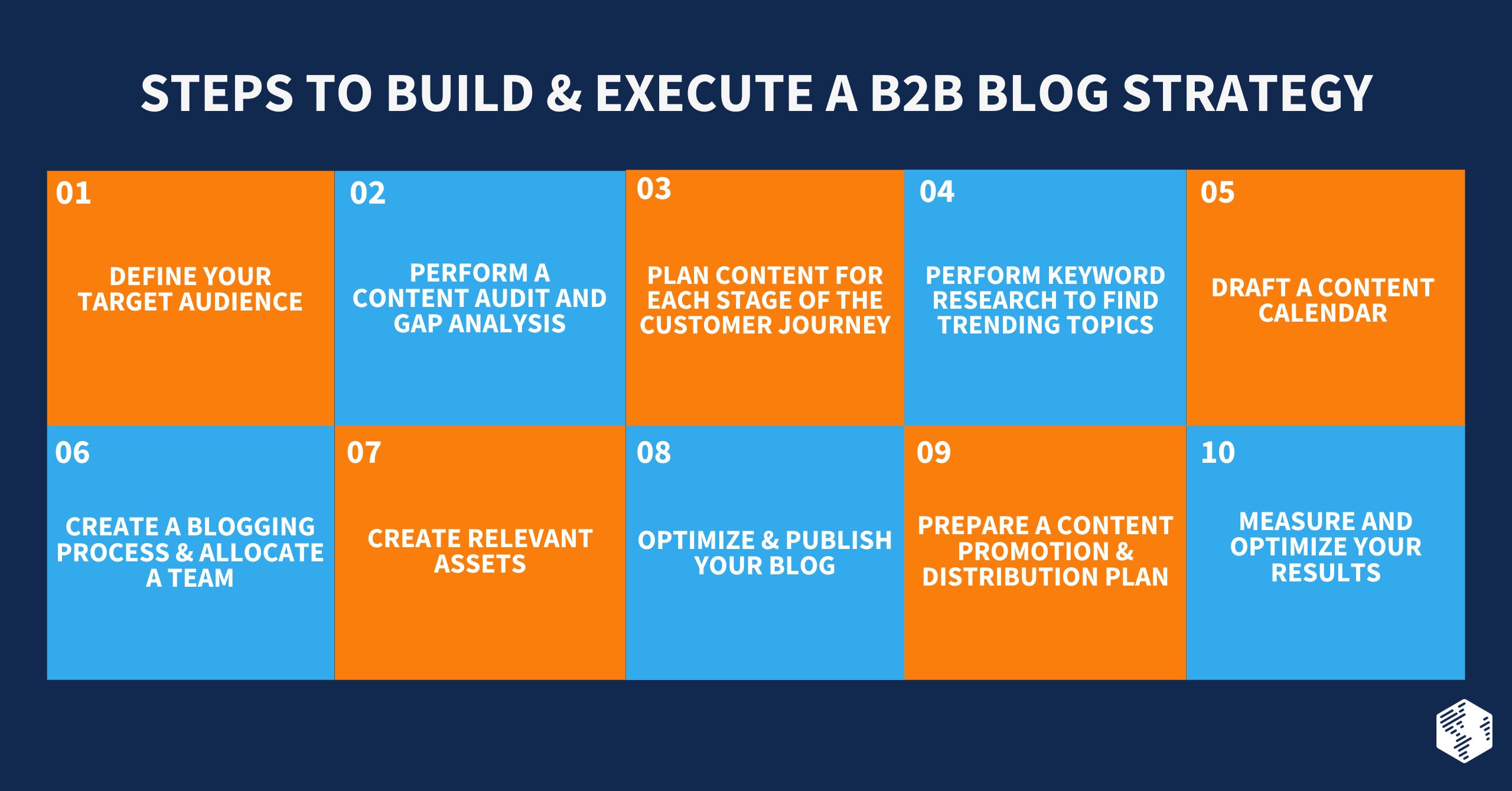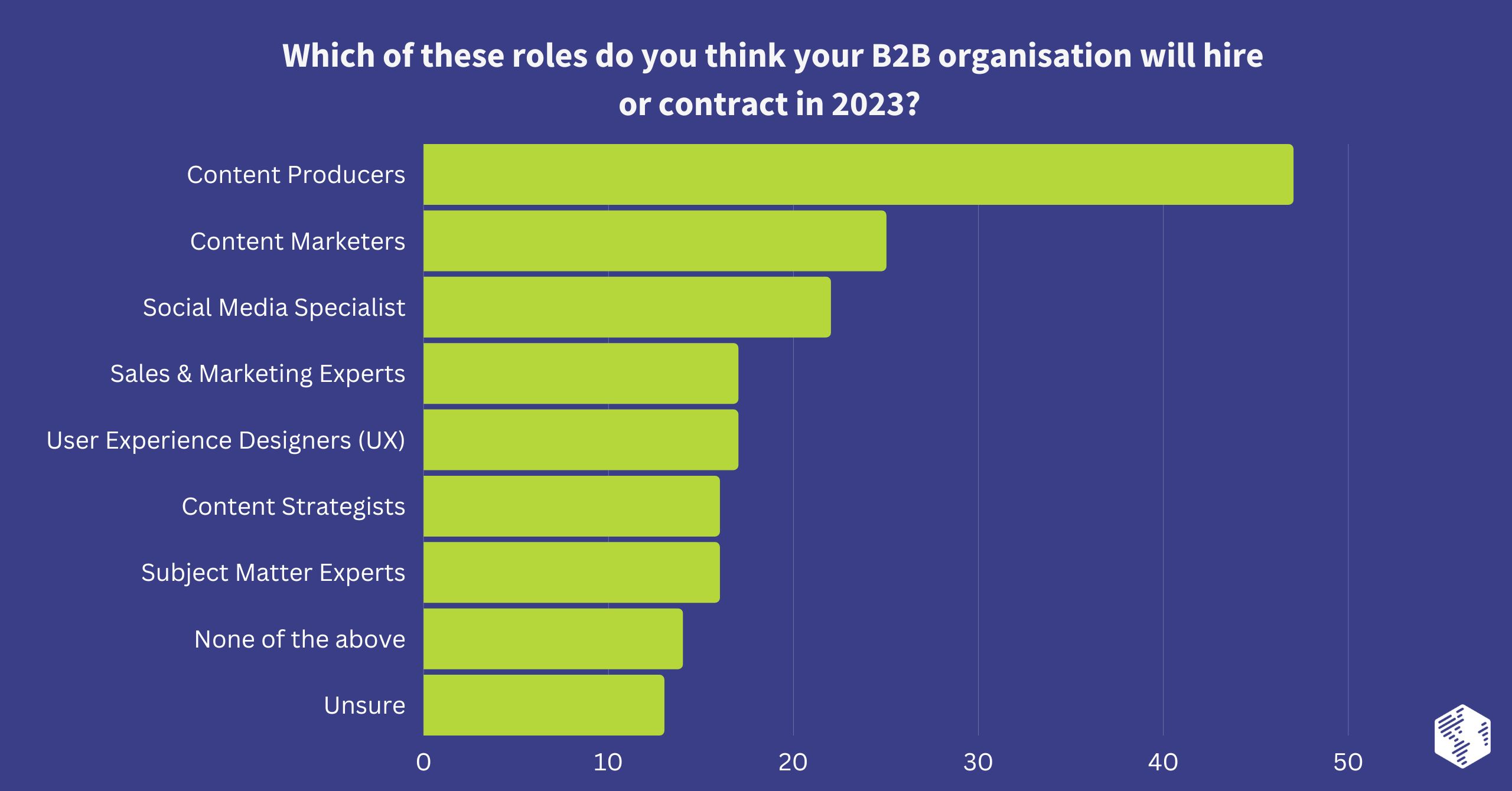Do you want to know the secret to successful blogging? It’s a blog strategy.
Think about it.
Can you achieve your blogging goals and objectives without someone to guide you? Can you attract quality traffic if you don’t know who you’re targeting?
Can you reach that audience without a distribution and promotion plan?
Can you know if your efforts are paying off if you don’t analyze existing content assets to see if they convert?
That’s right, you can’t.
A B2B blog strategy outlines all those steps, giving you a sense of direction. It guides you toward your goals, helping you make every effort count and turn your blog into a lean, mean, lead-generation machine.
What does it take to build and execute a B2B blog strategy? What are the reasons to develop it other than having a roadmap to your blogging goals?
Read on to find out.
Why Have a Blog Strategy in Place
Blogging is the fundamental element of content marketing. It sits at the top of the funnel to increase brand awareness, establish authority and thought leadership, and boost organic traffic and leads.
According to OptinMonster, B2B marketers who focus on blogging generate 67% more leads and are 13 times more likely to increase their ROI. HubSpot found that companies prioritizing blogging get 55% more traffic, 97% more inbound links, and 434% more indexed pages. Another fascinating statistic comes from FirstSiteGuide: companies with active blogs witness a 126% higher lead growth.
Why are these numbers relevant? Because all those companies have one thing in common: they have a well-defined blog strategy. Their success lies in following a plan instead of shooting blindly and hoping for the best.
That’s why you need a B2B blog strategy.
You’ll plan multiple pieces for all buyer’s journey stages to avoid running out of ideas, ensure consistency, and align your team with your goals. You’ll post strategically, capturing and converting qualified leads and building trust and loyalty.
Steps to Build & Execute a B2B Blog Strategy
Building and executing a B2B blog strategy takes time and effort. You can’t do it in a few days and expect qualified leads to start rolling in.
It’s a long-term investment comprising many moving parts and requiring ongoing efforts.
Here’s a B2B content marketing strategy checklist for planning, creating, publishing, promoting, and improving your blog posts.
1. Define Your Target Audience
Defining your target audience is crucial for creating content that resonates with your readers. It helps you develop a high-converting B2B blog strategy focusing on a niche of people most likely to join your customer base.
Once you know who to attract, tailoring your blog posts to their pain points and needs will be a piece of cake.
Create buyer personas to understand ideal buyers’ needs, preferences, behavior, challenges, goals, and intent. That will help you craft relatable, personalized content that drives qualified leads and conversions.
2. Perform a Content Audit and Gap Analysis
A B2B content audit helps analyze all content on your blog to gain insight into its performance and see what works and what you can improve. The goal is to ensure each piece provides real value to your target audience and perfectly aligns with your goals.
Customer behavior and needs change, so some of your older posts may no longer be relevant to your target readers. Some may have outdated information, while others may reflect your past goals and objectives.
Evaluate existing content assets to identify areas for improvement. Some may require fine-tuning to include the latest information while merging underperforming pieces into a single, comprehensive article could increase that content’s value.
A gap analysis is also beneficial, helping you discover potential “holes” in your content. Those can be answers to your target buyers’ burning questions or anything else that addresses their current needs and pain points.
Filling content gaps with recent data will help fulfill search intent and improve your content’s performance.
3. Plan Content for Each Stage of the Customer Journey
Each B2B buyer’s journey stage requires different content. Blog posts are perfect for the awareness stage, where potential buyers actively search for solutions to their problems. Your content can get your company on their radars, making them aware you exist and can solve their issues.
However, you can’t rely only on blog posts because many potential buyers know about your business and need in-depth, insightful technical content to see if you’re a perfect fit.
Here are the essential content types for each buyer’s journey stage:
- Awareness: educational blogs, infographics, explainer videos, eBooks, tutorials, guides, and social media posts
- Consideration: technical blogs, white papers, webinars, podcasts, checklists, quizzes, calculators, research papers, industry surveys, and newsletters
- Decision: product comparisons, case studies, testimonials, free trials, live demos, and free consultations
Planning all these content types when creating a B2B blog strategy will help you continually optimize and adapt the modern buyer’s journey because it’s not linear. You’ll understand their path to purchase to improve your content consistently for more conversions.
4. Perform Keyword Research to Find Trending Topics
Keyword research is among the best B2B SEO strategies for driving organic traffic to your blog. It helps discover words and phrases your target buyers use when searching for products or services in your industry or niche.
Keywords are the secret sauce of your B2B blog strategy. Implementing relevant terms into your content will help your blog pop up on SERPs (Search Engine Results Pages) for matching search queries. Your target audience will find you quickly, and you’ll increase organic traffic.
Semrush, Ahrefs Keyword Explorer, Moz Keyword Explorer, SEO PowerSuite, Google Keyword Planner, and HubSpot’s Content Strategy tool are the best keyword research tools you can use.
They can help you discover trending topics so you can write about stuff that interests your target audience. You know what that means: more social shares, traffic, and qualified leads!
Crucial advice: forget keyword stuffing. It’s a negative ranking factor Google uses to demote pages in search results because it manipulates rankings without bringing value.
Keywords help users find the content they need, so use them to write engaging content for people instead of focusing solely on search engines.
5. Draft a Content Calendar
Your keyword research will provide many relevant topics to write about, so you’ll need a content marketing calendar to execute your B2B blog strategy. It’s a framework for planning and organizing content production, distribution, and promotion.
A content calendar will give your marketing team the big picture regarding the planned content types for every buyer’s journey stage, target personas, goals, topics, keywords, publication dates, authors, and distribution channels.
Here’s a HubSpot example to get an idea:

This calendar will keep your content creators and editors on the same page. They’ll maintain consistency and accountability, meet deadlines, avoid scheduling conflicts, track marketing expenses, and improve brainstorming.
6. Create a Blogging Process & Allocate a Team
A structured blogging process will help you consistently craft top-notch content that converts. It will streamline your efforts and maximize results.
This repeatable process should include the following:
- Specifying the target audience segment and buyer personas
- Choosing a content topic
- Selecting relevant short-tail and long-tail keywords
- Creating a content brief
- Crafting a blog outline
- Assigning the writing task
- Writing the first draft
- Optimizing the copy for search engines
- Editing the piece
- Publishing the final draft
- Promoting it across marketing platforms
- Measuring the performance
Create a flowchart to visualize your blogging process and help your teammates understand the steps. They’ll enjoy a smooth workflow without friction or guesswork.
Speaking of your teammates, you’ll need experts for all content planning, production, distribution, and promotion activities.
According to the Content Marketing Institute, 47% of B2B organizations will hire content producers in 2023.
Besides content strategists, writers, and editors, you’ll need graphic designers and audio/video specialists to create high-quality visuals. You’ll also need social media managers and email marketers to promote your blog and web developers to maintain it.
7. Create Relevant Assets
Now that you have a defined blogging process and the dream team responsible for all the tasks, it’s time to create high-quality content assets your readers will love.
When creating blog posts and other B2B lead magnets, consider your target audience and the buyer’s journey stage to provide real value to your readers.
Include relevant keywords naturally and focus on writing engaging copies that glue your readers to the screen, compelling them to read through and heed your calls to action (CTAs).
Ensure your tone of voice and style are consistent across content assets, the sentences and paragraphs flow smoothly, and every piece conveys the right message. That’s how you’ll create content that converts.
Don’t forget eye-catching visuals – high-resolution images and videos relevant to your topics. They’re perfect for capturing attention, driving engagement, and breaking up long chunks of text.
However, create custom visuals (e.g., infographics, illustrations, charts, and screenshots) instead of adding overused Google images that don’t provide real value.
8. Optimize & Publish Your Blog
Once you have an engaging copy, optimize it for search engines to get high on SERPs and drive organic traffic to your blog.
Besides ensuring it contains strategic keywords, attention-grabbing visuals, and a compelling CTA, insert internal links to connect relevant pages and encourage visitors to stay longer on your site.
Internal links help search engines index your pages and rank your website higher. Write an SEO title and meta description for the same purpose.
Once you check all those boxes, edit your blog to check for typos, correct grammatical and spelling errors, assess the keywords, and evaluate the style, tone, readability, and consistency.
After ensuring everything is flawless, publish your blog and spread the word.
9. Prepare a Content Promotion & Distribution Plan
“Build it, and they will come” may have worked in Field of Dreams, but it won’t yield positive results for your B2B blog strategy. Distributing and promoting your content is the only way to attract the right audience.
Develop a content distribution strategy to leverage your prospective buyer’s preferred channels like social media, email, Q&A platforms, and press release websites.
Once you create a plan, select relevant channels, and set content distribution goals and KPIs (key performance indicators), share your assets with the world and watch how your content marketing drives sales.
Regularly promoting your content will increase your online exposure and pull more prospective buyers to your website. That means resharing your content and repurposing various assets to reinforce your message.
10. Measure and Optimize Your Results
Distributing and promoting your content will increase your brand awareness, traffic, and leads, but you won’t know what to improve if you don’t measure the results.
This approach never works. Measuring and optimizing your results is the only path to continuous improvement and long-term success.
Many B2B marketing analytics tools can help you track KPIs, including unique blog visitors, impressions, traffic sources, average session duration, views per post, and pages per session.
You can monitor other B2B marketing KPIs, like organic traffic, generated leads, conversions, and bounce rates.
Here’s an example of reports from HubSpot’s integrated analytics platform:

Whether you use Google Analytics, HubSpot Marketing Hub, or another analytics tool, you’ll gain valuable insights into your blogging, SEO, and distribution efforts. You’ll get real-time reports showing what needs enhancement and what assets and channels perform the best.
Take Your B2B Blog Strategy to the Next Level With OneIMS
You know what they say: Rome wasn’t built in a day.
The same adage applies to blogging. It will take months to see the results; some say six months, while others agree on the one-year mark. The truth is: it depends on your business, blog strategy, goals, and efforts.
OneIMS can help your blog get traction as fast as possible. Check our case studies and solutions to see how we can take your B2B blog strategy to the next level and transform your business.
In the meantime, read our previous blog on B2B content marketing mistakes. You’ll learn tips and tricks for avoiding the common pitfalls when crafting your blog posts.



































